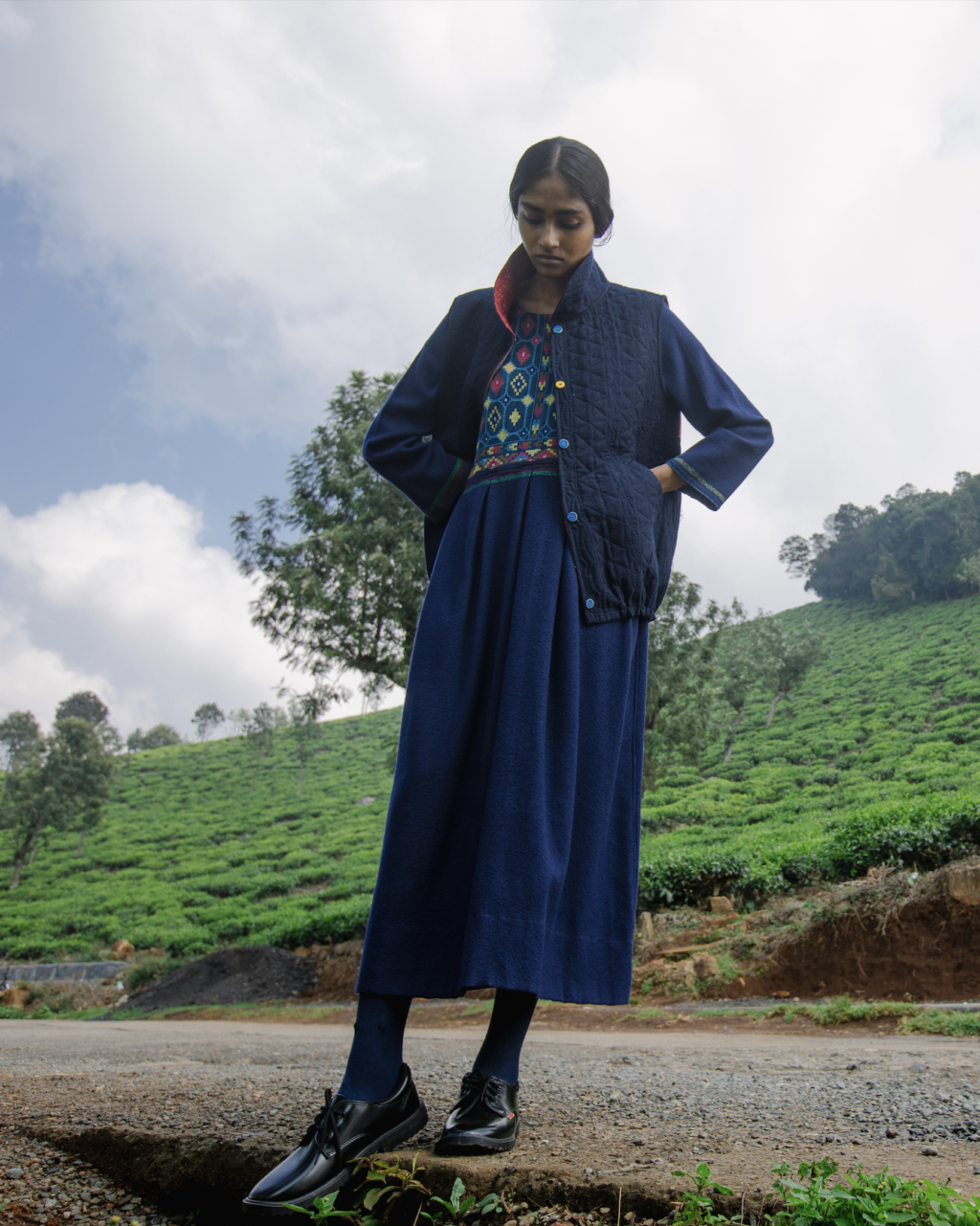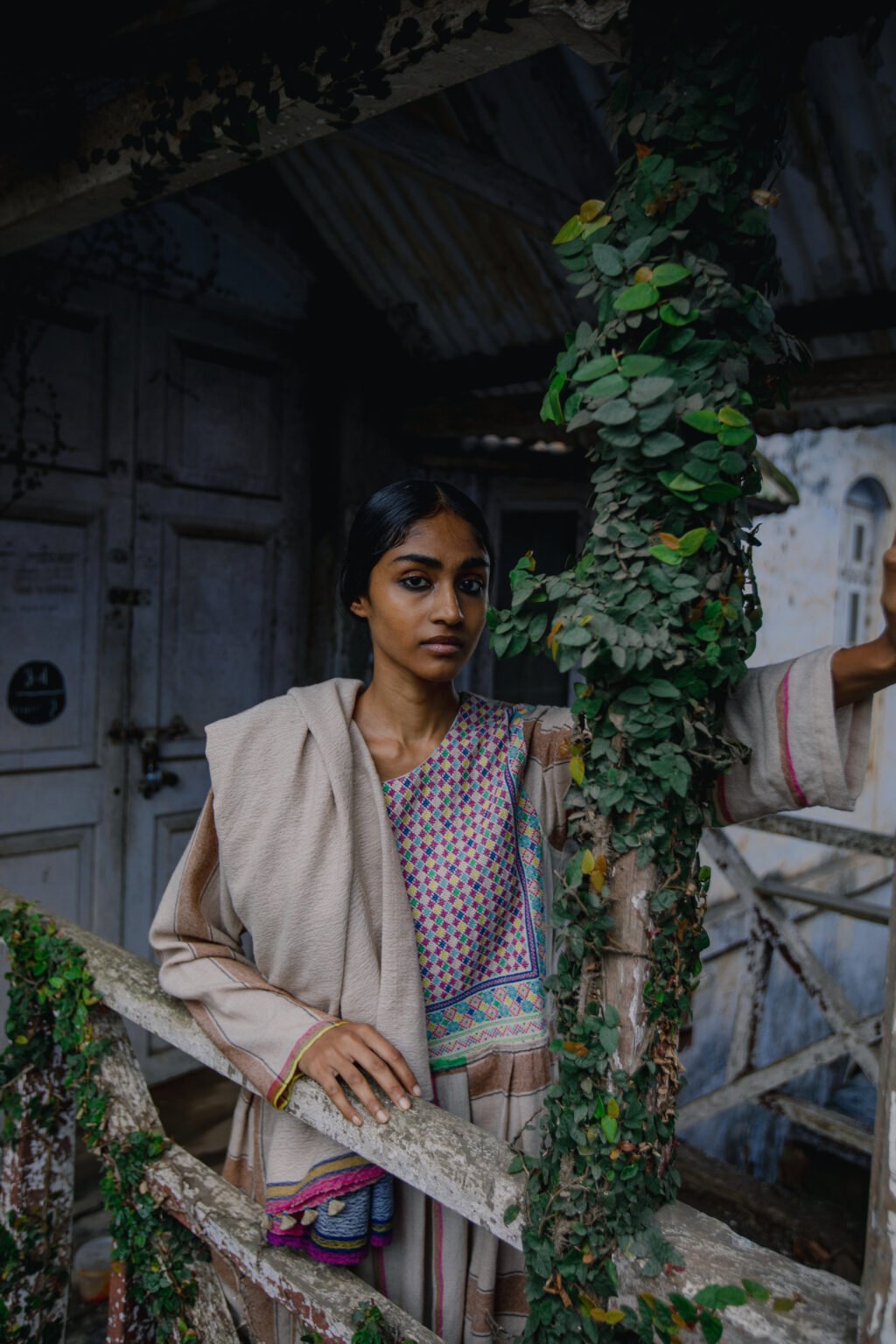13.03.2024
JUT EMBROIDERY
Kutch is a region that has celebrated needlework for generations. It not only gives identity to the communities but also reveals their cultural legacies. The intricacy and vividness of various types of embroidery styles in Kutch demonstrate a clear convergence of Gujrat, Rajasthan, and the Sindh region of Pakistan.
One such embroidery is Jut-Garasiya embroidery done by the Jut-Garasiya community. This community is one of three sects of the Jut community; the other two are Dhaneta Jut and Fakirani Jut. Traditionally, this community was Maldharis (keepers of cattle); presently, they are carrying forward different occupations. Jut Garasia are usually landholders or agriculturalists. The word Garasia comes from the word Garas, which means land given by rulers for farming.
Embroidery is an integral part of the daily lives of Jut-Garasia women and is mostly made for their personal use. The skill is passed down through generations. The women wear a long dress with a heavy Jut-embroidered yoke called Ghaggo, which is paired with Odhani, and the men wear salwar kameez in deep tones of blue and khaki. This community cherishes their art like treasures; the yoke is reused and patched on a different Ghaggo but never passed down or thrown; instead, the embroidered yoke is immersed in the water.
The concept of reusing and repurposing the yokes in such innovative ways not only shows a sustainable attitude but also the individuality of each woman reflected in their attire, which contains cultural and personal meanings.
The unique aspect of the embroidery style is the application of colors complementing the rich red of their traditional garments and the use of white to emphasize and outline the patterns. White not only adds contrast to the composition but also brings amusement to the entire design.
The embroidery is geometrical, intricate, and dense, with a heavy, contrasting color palette. The patterns are embellished, keeping in rhythm with the warp and weft of the fabric.
Jut is counted thread embroidery, where the design and guidelines are mentally conceptualized rather than drawn. A grid is initially made, which is of a fixed size throughout the design.
The geometric forms or outlines are created by counting threads on a coarse cotton fabric, which is later rendered by using double chords of threads using very fine cross stitches.
Bold colors are used with the placement of small round mirrors (abla), which makes this embroidery vibrant and heavy in weight.
INJIRI has explored different possibilities in technique and style, which reflect in our collections. Playing with colors, negative spaces, fabrics, and other techniques or textiles like Soof has opened many different ways of preserving and evolving this technique. Keeping the essence of the embroidery alive and adding newness to it keeps us and the artisans motivated and engaged.


